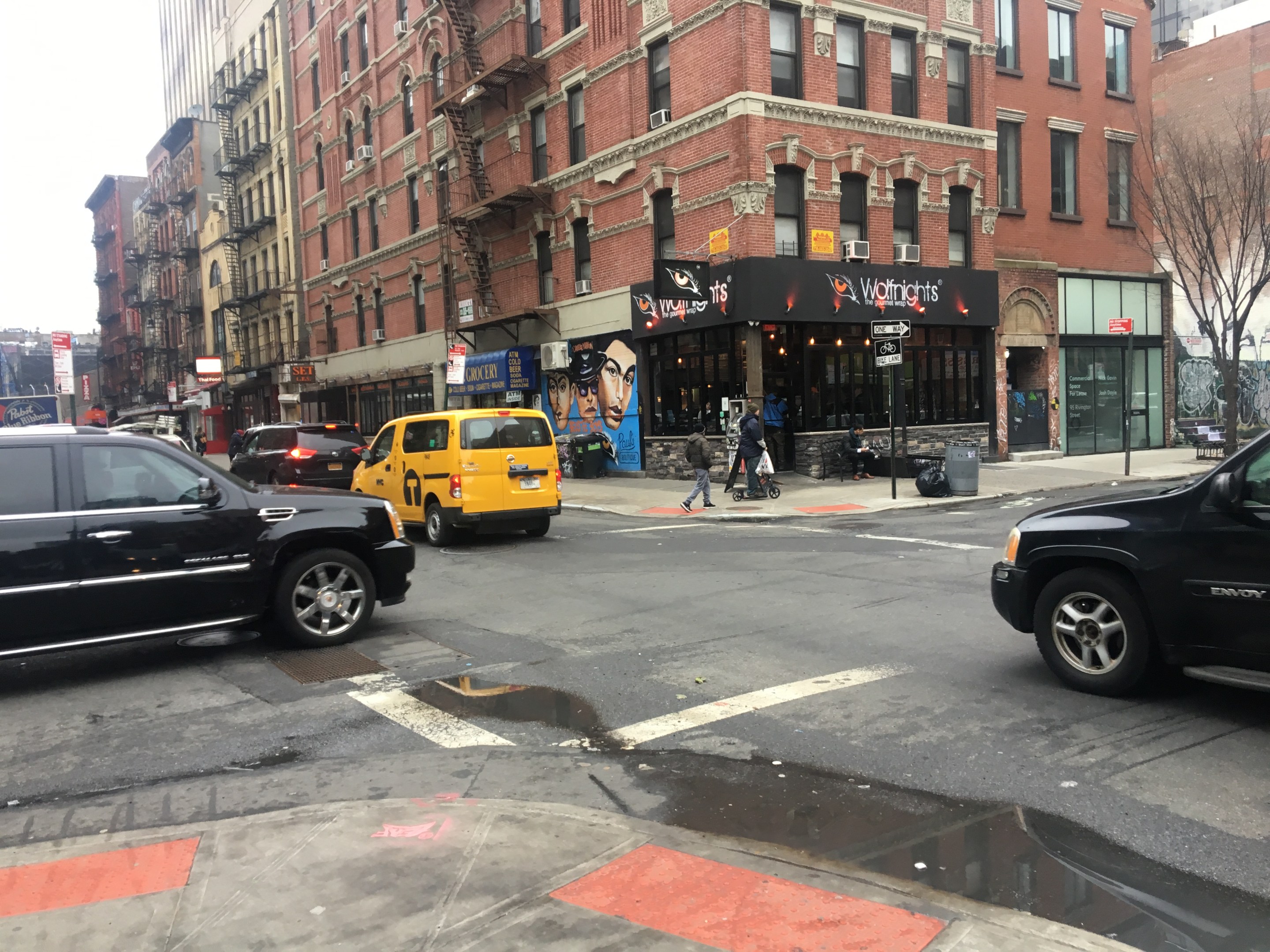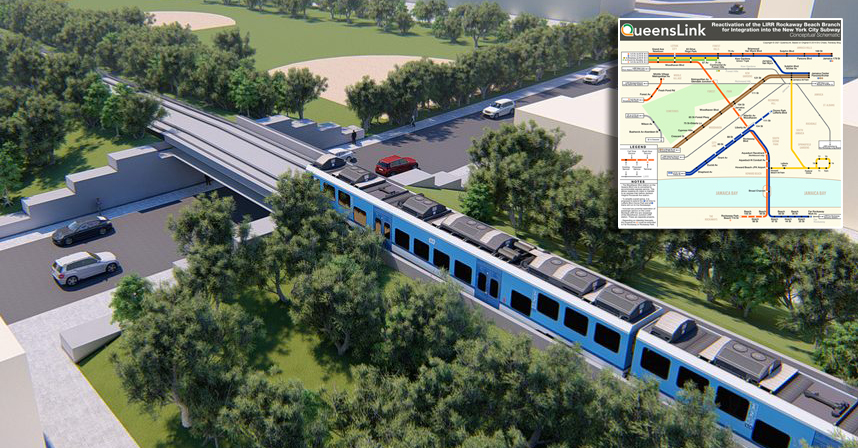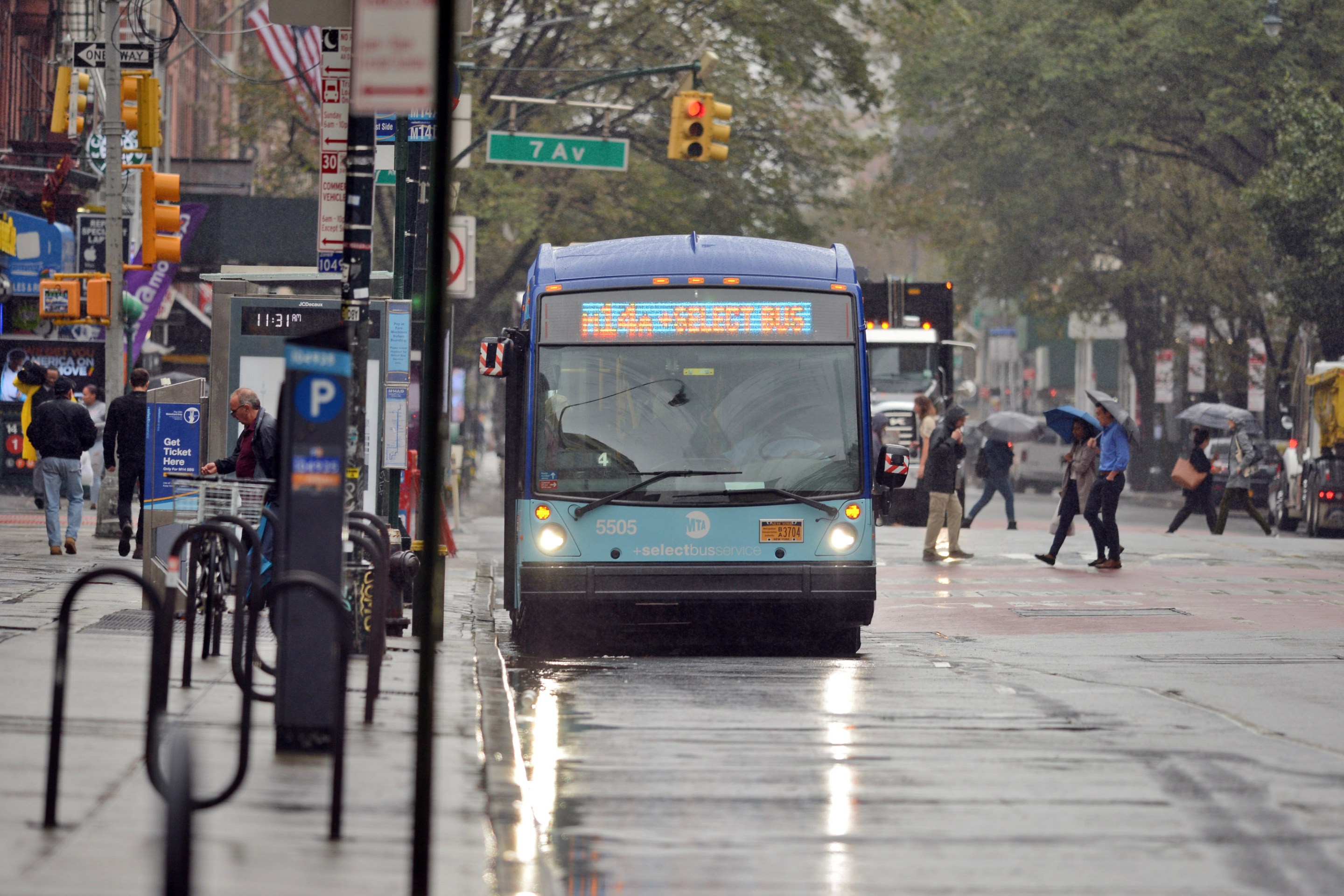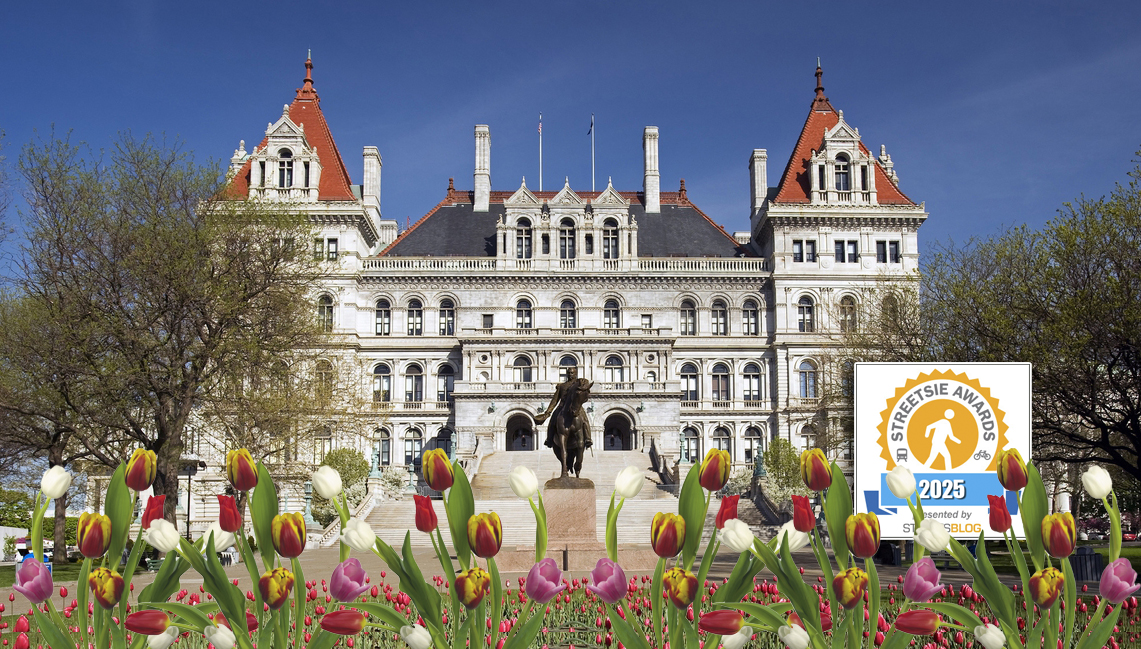Pedestrians and cyclists rightly consider fear big, multi-lane streets — but a new report points out that small, single lane streets can be perilous as well.
The report by Localize.city, a data-driven website, crunched NYPD collision data to find that many dangerous small streets are clustered together. The neighborhoods with the most crashes on small streets between 2013 and 2018 were Williamsburg, the Lower East Side, North Corona and Ditmas Park.
There are 25,350 intersections of one-lane roadways in the city. They comprise roughly 40 percent of all intersections, but are the location of only eight percent of all injury-causing crashes — with an average of just .2 crashes between 2013 and 2018, according to data compiled by Localize.city analyst Israel Schwartz.
But many neighborhoods have extremely dangerous one-lane crossings — with the most dangerous averaging close to seven crashes over the same five-year period. It's a finding that will surprise many people, who might be inclined to think that one-lane roadways are safer.
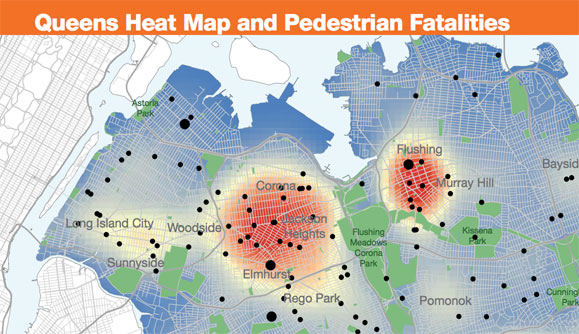
"When you have many modes of transportation converging into a narrow corridor and through busy residential neighborhoods, it can increase the risk of crashes," said Alon Goldstein, an urban planner with Localize.city. "That's what we see on both sides of the Williamsburg Bridge, where you have a lot of vehicle, bike and pedestrian traffic cramming into local streets."
The Localize findings include:
- Many dangerous one-way crossings are clustered in Corona, Schwartz said. For example, six pedestrians and one cyclist were injured at the intersection of 37th Avenue and 101st Street, while five pedestrians and one cyclist were injured two blocks away at 37th Avenue and 99th Street. The Avenue is a commercial strip with parking on both sides and no bike lanes.
- The Lower East Side also has a cluster of dangerous one-way crossings. Eighteen pedestrians were injured on Rivington Street between 2013 and 2018, Localize found. Seven pedestrians and four cyclists were injured at or near where Rivington intersects with Ludlow Street. Five pedestrians and two cyclists were injured near the intersection of Rivington and Clinton streets.
- Williamsburg, eight pedestrians and 11 cyclists were injured in a 10-block radius. Five cyclists and two pedestrians were hurt at the intersection of South Third and Keap Streets. Seven cyclists and four pedestrians were injured four blocks away at the corner of South Third and Havemeyer streets. At Hooper and South Fifth streets, two pedestrians and four cyclists were injured between 2013 and 2018.
- In Ditmas Park, 13 pedestrians and cyclists were injured along Newkirk Avenue over the five-year period. At Newkirk and Argyle Road, four pedestrians and three cyclists were injured. At Newkirk and Rugby Road, four pedestrians and two cyclists were injured.
Street safety advocates say the city needs to improve protections for pedestrians in one lane streets by updating them to give pedestrians more space.
“New York City needs to be redesigning all its streets to comply with a Vision Zero standard so people are safe getting where they need to go,” said Thomas DeVito, Director of Advocacy at Transportation Alternatives. “This means dramatically expanding the implementation of curb extensions, daylighting every intersection, further automating enforcement against speeding, illegal parking and right of way violations, as well as building out a comprehensive protected bike lane network.”
Department of Transportation spokeswoman Lolita Avila told Streetsblog, "DOT takes each crash seriously and is continuously looking for new solutions to help eliminate traffic related injuries and deaths. We do recognize that overall fatalities have gone up so far this year, and we are monitoring trends closely. With those trends in mind, DOT will soon release Vision Zero Borough Pedestrian Safety Action Plans, updated for the first times since 2015, which will refocus where we target our interventions, safety engineering, enforcement action, and education initiatives."
The soon-to-be-updated action plans are archived here. Localize's website is at www.localize.city.
